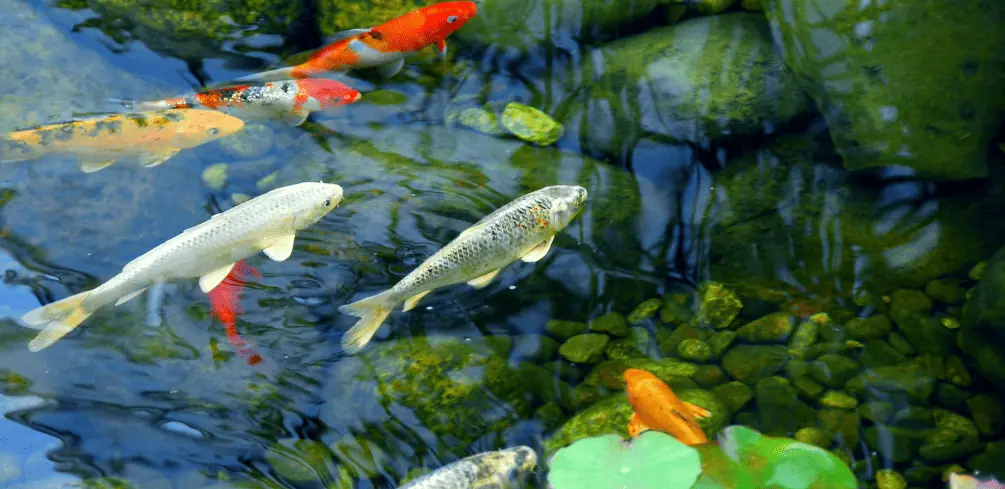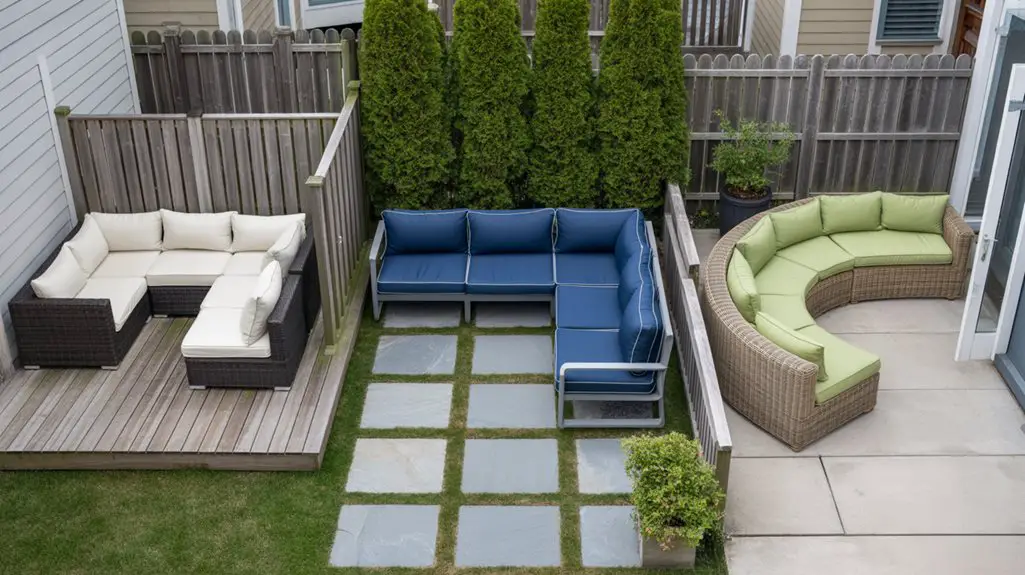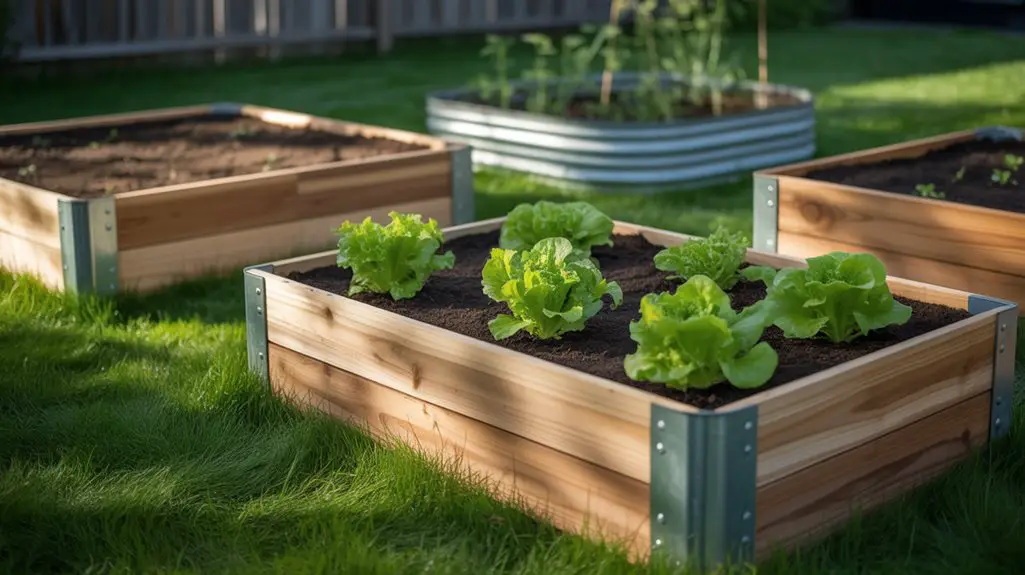Ever thought about adding some liveliness to your backyard pond?
Well, incorporating fish into your aquatic habitat is a fantastic way to enhance its visual appeal and cultivate a dynamic ecosystem right at home.
However, it’s not as simple as just plopping any random fish species in there. You’ve got to understand the key features of your pond – like its size, depth, and water quality – before making an informed decision on what type of aquatic life will thrive under those conditions.
That’s not all, though. Your local climate plays a major role in determining which species can comfortably survive year-round in your outdoor pond. Some fish require warmer climates, while others can withstand colder temperatures.
Recognizing the Key Features of Your Pond
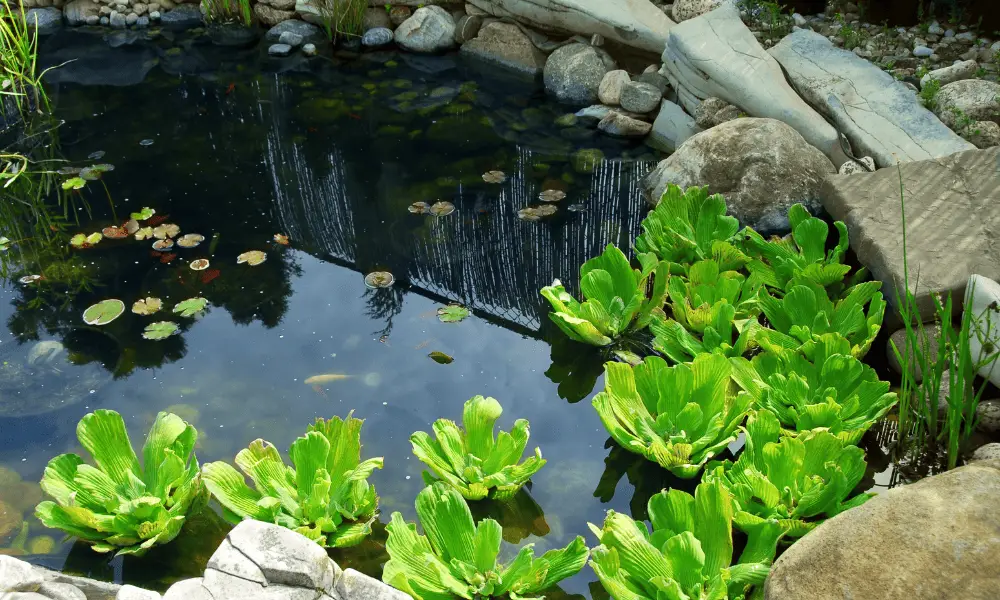
Before you select the perfect fish for your backyard pond, it’s essential to understand its key features, such as depth, size, and location.
Pond depth determination is crucial since different species of fish thrive at varying depths. Some varieties prefer shallow waters, while others require deeper areas to survive and flourish.
Moreover, the pond’s size plays a significant role in determining the number and type of fish that can comfortably inhabit it. A larger pond will naturally allow for a wider variety of species or larger quantities of a single species.
Your local wildlife impact should also be taken into consideration when making your selection. Birds, amphibians, and insects – all contribute to your pond’s ecosystem and hence need careful attention.
For instance, if your area is prone to predatory birds like herons or kingfishers, you might want to consider stocking your pond with smaller fish that can hide easily amongst vegetation or within provided shelter structures.
Recognizing these elements helps set up a thriving habitat for your aquatic pets while ensuring their longevity and health.
Keep in mind that selecting the right type of fish isn’t just about aesthetics; it’s an ecological decision impacting both the life within your pond and those interacting with it from outside its boundaries.
So take time to understand these factors before embarking on this exciting journey towards setting up a lively backyard water feature brimming with contented swimmers!
Understanding the Climate Requirements

It’s important to grasp that different aquatic species thrive in varying climates; for instance, koi carp prefer temperate conditions, while guppies need warmer water.
This is due to each species’ adaptation to their native environments, which leads them to develop unique physiological requirements.
Just like you wouldn’t expect a palm tree to flourish in the Arctic, certain fish will struggle if placed in climates not suited for them. So, before selecting your pond inhabitants, take some time to research and understand the climate needs of potential candidates.
Here are a few key factors that can help you comprehend how temperature fluctuations impact your choice of fish:
Understanding these interactions can guide you toward creating an optimal pond environment that caters specifically to the chosen residents’ needs rather than forcing them into potentially harmful situations.
Remember that maintaining consistent, suitable temperatures also contributes significantly towards ensuring healthy growth rates and overall vitality within your backyard pond’s community.
By doing so, you’re not only adding an aesthetic feature to your space but also creating a thriving ecosystem right at your doorstep!
With knowledge comes power – use it wisely when choosing your new scaly friends!
Choosing Hardy Species for Beginners
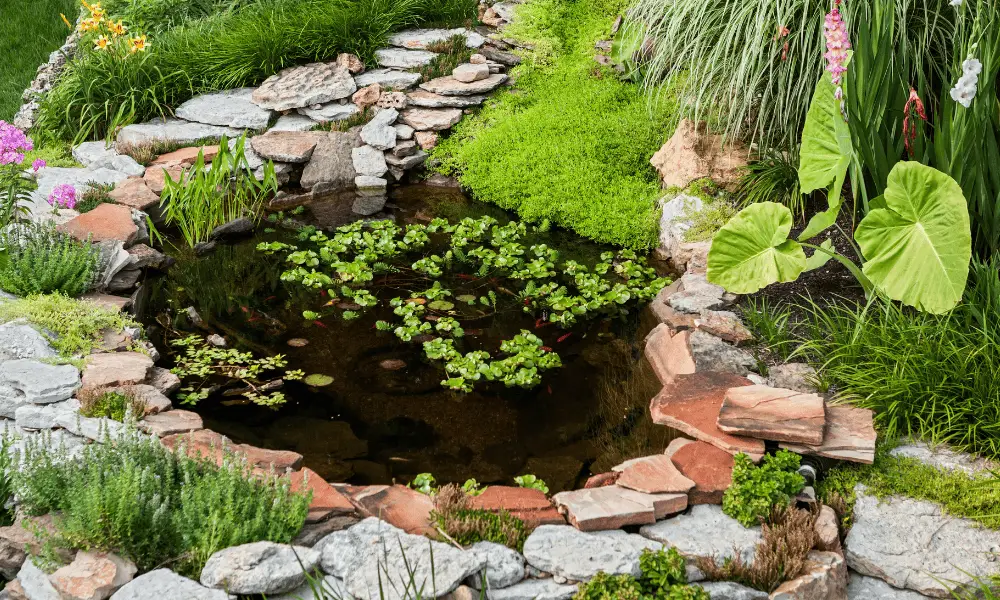
Let’s dive into the world of hardy species, a perfect starting point for budding aquarists! Choosing the right fish is crucial in setting up your backyard pond.
If you’re new to this hobby, it would be wise to start with hardy species. These are forgiving types of fish that can tolerate beginner mistakes and a wide range of environmental conditions.
They typically have long species lifespans and exhibit fascinating behaviors which make them an excellent choice for beginners.
Examples of such species include goldfish and koi. Goldfish are known for their adaptability and resilience; they can thrive in varying water temperatures and conditions.
Koi, on the other hand, are not only beautiful but also robust against diseases and parasites. Both these fishes have interesting social behaviors – while goldfish tend to be more solitary swimmers, koi enjoy swimming in groups or ‘schools.’
Understanding your chosen fish’s behavior is crucial as it allows you to provide them with an environment that caters to their natural tendencies.
So now you know why starting with hardy species like goldfish or koi could be beneficial for beginners – these fishes’ resilience against changing environments coupled with their long lifespan makes them ideal first choices.
Moreover, observing their unique behaviors can serve as an exciting introduction to the world of aquaculture.
Remember, though, no matter how hearty your fish might be, maintaining a clean pond environment remains fundamental for their survival and well-being.
Ensuring Suitable Habitat for Selected Aquatic Life
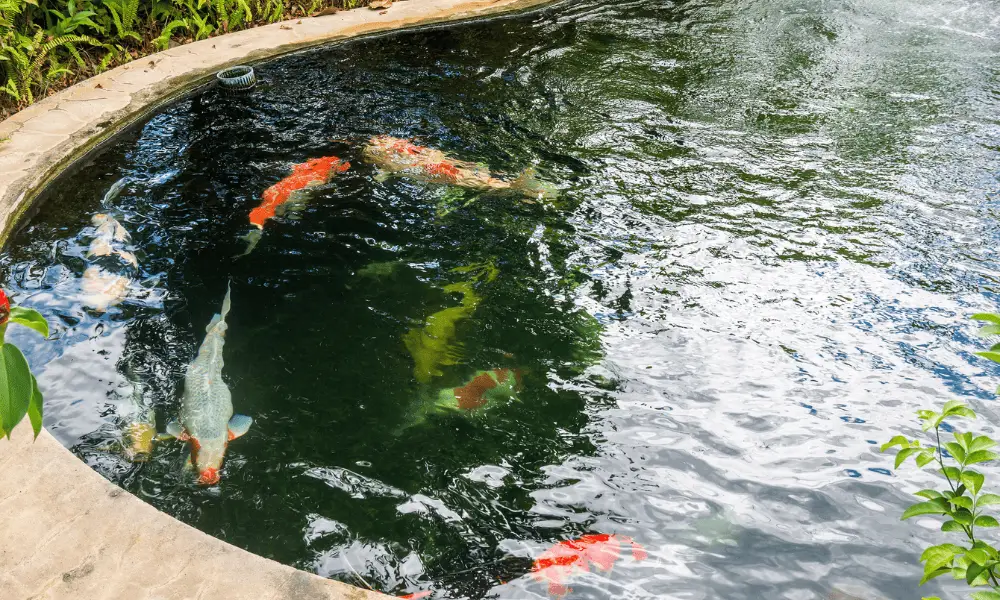
You’ve picked your hardy species; now it’s time to focus on creating a habitat that mirrors their natural environment.
The first step is understanding the fish compatibility considerations. Each type of fish has specific needs in terms of temperature, pH level, and space requirements.
For instance, goldfish prefer slightly alkaline water with a pH between 7.0 and 8.4, while koi thrive in water with a pH between 7.5 and 8.0.
Also, consider how different species interact with each other – some may be territorial or aggressive towards others, which can lead to harmful stress levels for all inhabitants of your pond.
Next up is maintaining optimal pond water quality for your chosen aquatic lifeforms. It’s not just about keeping the water clear; you need to ensure proper oxygenation, maintain balanced nutrient levels, and control any potential pollutants that could harm your friends.
A well-functioning filtration system can help keep the water clean by removing excess waste and preventing harmful algae blooms caused by overfeeding or overcrowding of fish stocks in the pond.
Creating an ideal habitat goes beyond just choosing compatible species and maintaining good water quality; it also includes designing a safe haven complete with suitable vegetation providing shade & hiding spots as well as having predator protection measures like netting or decoys in place because birds, cats, raccoons, etc., are always on the lookout for an easy meal!
Remember that each element added to your backyard pond should serve a purpose supporting overall ecosystem health while ensuring it remains a vibrant home for your selected aquatic lifeforms.
Maintenance Practices for a Healthy Ecosystem
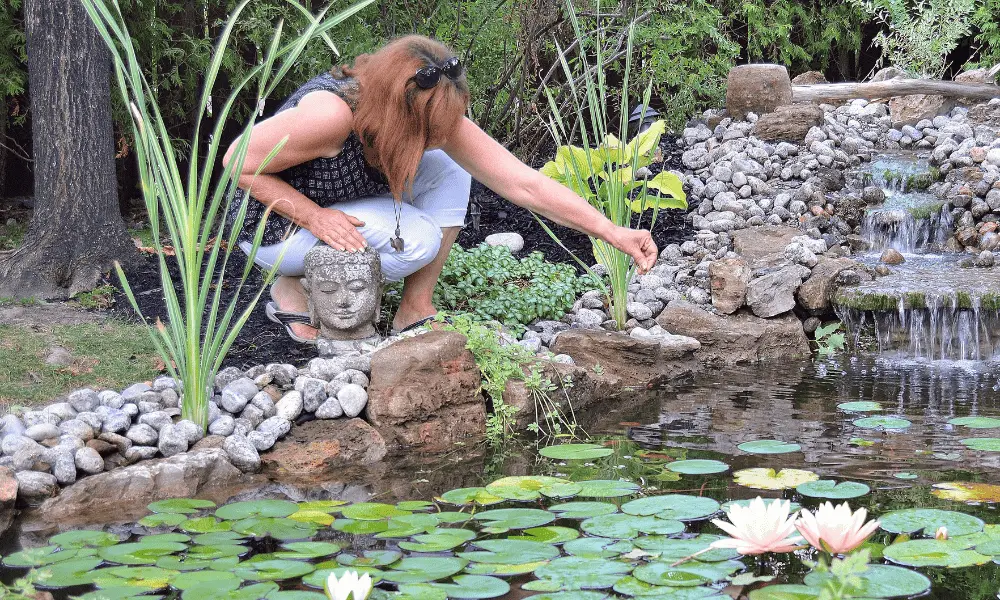
Nurturing your aquatic oasis requires more than just a dash of love and care; imagine donning the hat of a master gardener, meticulously pruning and nurturing every aspect of your water garden to ensure it remains a thriving ecosystem.
The secret lies in regular maintenance practices that keep the pond clean and healthy for its inhabitants.
Pond Cleaning Techniques such as removing dead leaves or debris, changing the water regularly, or utilizing specific equipment like pond vacuums can help maintain optimum conditions.
However, remember that some level of organic matter is beneficial for microorganisms, which form an integral part of the food chain.
Algae Control Methods also play a fundamental role in maintaining the balance in your backyard pond. Algae proliferate quickly under favorable conditions, leading to eutrophication, which can be detrimental to other aquatic life forms due to oxygen depletion.
You can control algae by limiting nutrient availability (especially phosphorous), introducing algae-eating species like certain types of fish and snails, using UV sterilizers, or implementing treatments with algaecides.
But choose wisely because each method has its own implications on the overall health and biodiversity of your pond ecosystem.
| Pond Cleaning Technique | Impact |
|---|---|
| Removing Debris | Improves water clarity & reduces excess nutrients |
| Water Change | Replenishes essential minerals & removes waste products |
| Using Pond Vacuum | Efficiently cleans bottom sediment without disturbing lifeforms |
Your backyard pond is not merely an aesthetic element; it’s a dynamic system teeming with life – every organism playing its unique role in sustaining this miniature ecosystem.
So, while you plan for fish varieties suitable for your pond, also consider how you will support their existence through effective maintenance practices – from cleaning techniques that preserve optimum conditions to algae control methods ensuring balanced growth. Your efforts will reward you with a vibrant underwater world right outside your doorstep!
Conclusion
So, you’ve explored the essentials of creating a harmonious aquatic ecosystem in your backyard. You’re now armed with knowledge on crucial aspects such as recognizing pond features, understanding climate requirements, and selecting hardy species.
Remember, maintaining balance isn’t just science; it’s an art. Like a skilled painter, you’ll learn to blend colors of patience and diligence to create your masterpiece – a thriving backyard pond teeming with life!

